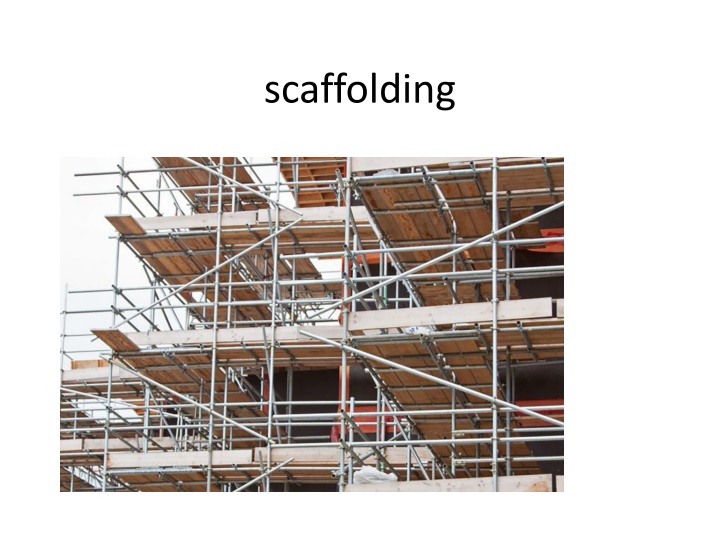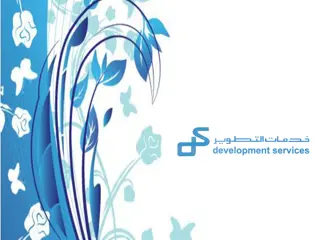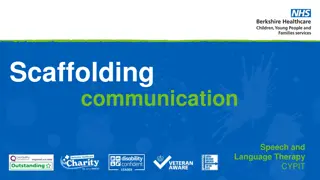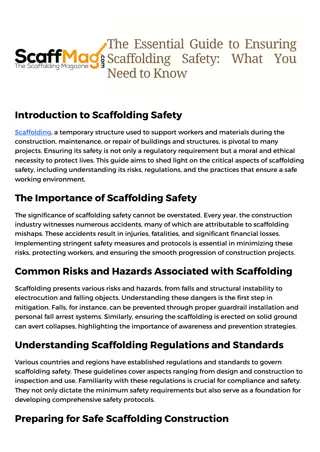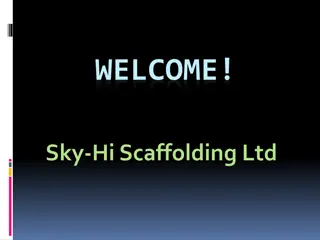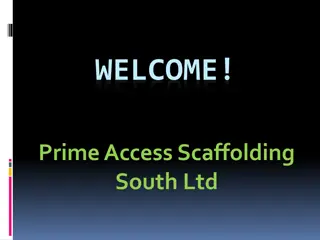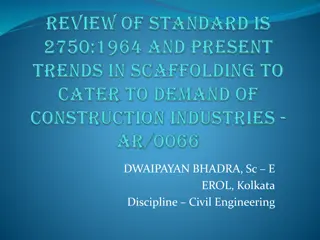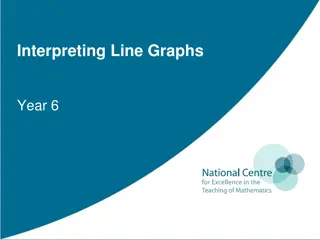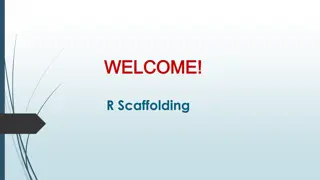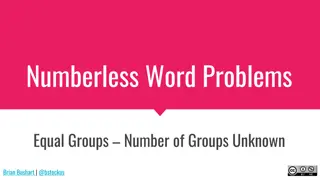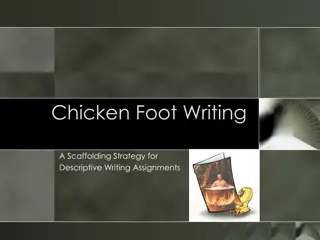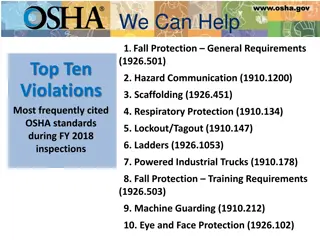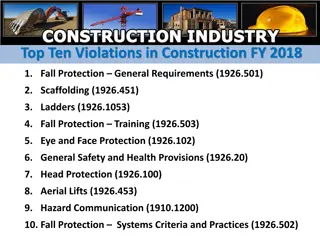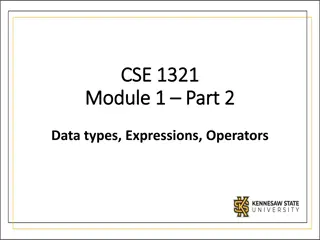Overview of Different Types of Scaffolding
Explore the various types of scaffolding, including single scaffolding, cantilever scaffolding, suspended scaffolding, trestle scaffolding, steel scaffolding, and patented scaffolding. Learn about their unique features, uses, and benefits in construction projects.
Download Presentation

Please find below an Image/Link to download the presentation.
The content on the website is provided AS IS for your information and personal use only. It may not be sold, licensed, or shared on other websites without obtaining consent from the author.If you encounter any issues during the download, it is possible that the publisher has removed the file from their server.
You are allowed to download the files provided on this website for personal or commercial use, subject to the condition that they are used lawfully. All files are the property of their respective owners.
The content on the website is provided AS IS for your information and personal use only. It may not be sold, licensed, or shared on other websites without obtaining consent from the author.
E N D
Presentation Transcript
Standards-vertical members of frame work embedded into ground Ledgers-horizontal members parallel to wall Putlogs-transverse pieces placed on ledgers which are supported on wall Transoms-putlogs with both ends supported on ledgers Braces-diagonal pieces Bridle-brige an opening in a wall it supports one end in putlog Guard rail-rail provided with ledger Raker- inclined support
Single scaffolding Widely used in brick work Single row of standards at a distance of 1.2m Putlogs are placed at horizontal distance of 1.2 to 1.8m
Stronger than single scaffolding Two rows of standards are provided Distance between face of wall and first row of standards is 200mm to 300mm
Cantilever or needle scaffolding May be single or double scaffolding Needle supported on floor level
Suspended scaffoldings Used for maintainance works Working platform suspended from roof by ropes, wires or chains
Trestle scaffolding Working platform supported by ladders, tripods mounted on wheels Height of this type of scaffolding is 5m fro supporting surface.
Steel scaffolding Steel tubes effectively used for scaffolding work Can be used to any height High intial cost Skilled labour required
Patented scaffolding Made of steel Use of working platform supported by bracket
shoring They are temporary structures Structures become unsafe due to unsettlement of foundations or removal of adjacent building Shoring is required to prevent movements.
Circumstances when shoring is required Adjascent structures is diamantled Cracks due to unequal settlement of foundation Large openings in walls Poor workmanship
Types of shoring Raking or inclined shores Flying or horizontal shores Dead or vertical shores
Raking shores Consist of wall plate ,needles,cleats,rakers, bracings,sole plate Rakers prevent outward movement of wall Large factor of safety is used for designed of inclined shores Rakers inclined at 45 Sole plate at ground
Flying or horizontal shores Horizontal support to parallel walls Consist of wall plate ,needles,cleats,struts etc Suitable for max distance of about 9m
Dead or vertical shores Needles are supported by vertical members called shores. Used under following circumstances - Lower part of wall is defective - -foundations are deepened - -lower part is to be rebuilt
underpinning Placing of new foundation above existing foundation
Circumstances used for underpinning Building with deep foundations constructed to near building Settlement of existing foundation Basement is to be provided to existing building Existing foundations to be deepened
